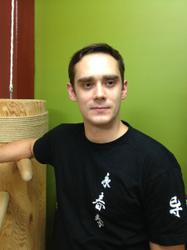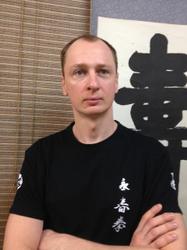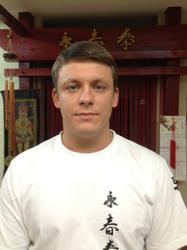Wing Chun Art
The meanings of the words martial’ and art’ together is not entirely clear to the individual. Many years’ experience of Wing Chun classes, however, provides a sense of understanding. There is a natural set of meanings leading to clarity of understanding: the spontaneity of applying skills and drills in duels or other extreme conditions. To move adequately in any environment just like a fish moves in water’. To react correctly to unpredictable actions.
 When translated from Chinese, Wing Chun (Yun Chun) means Eternally Blossoming Spring. So much strength, youth and life’ lies within this name. The Masters of this form weaved together the most rational and effective methods. Let us pay special attention to the main principles of this unique school. At the same time, however, we will try to avoid comparing our school with other schools, as one of Wing Chun’s principles is the acceptance of all that is best; no rejection, but rather a following and utilization.
When translated from Chinese, Wing Chun (Yun Chun) means Eternally Blossoming Spring. So much strength, youth and life’ lies within this name. The Masters of this form weaved together the most rational and effective methods. Let us pay special attention to the main principles of this unique school. At the same time, however, we will try to avoid comparing our school with other schools, as one of Wing Chun’s principles is the acceptance of all that is best; no rejection, but rather a following and utilization.
The Grand-Master, Kernspecht, managed to create a precise system of Wing Chun which is taught in Europe. Their knowledge, skills and commerce merged together into the single whole success of the school. Students and teachers within this single system complement each other, thereby developing the school's teaching in Europe. Even mystical Wing Chung schools in Vietnam have to move towards uniting together to form a single teaching technology, thereby putting their clans' disagreements on hold.
The development of the Wing Chun school in Russia also came from different sources. Namely Master Te Kong’s Chinese school (he spent the last days of his life in Vietnam). In addition, there is Master Yip Man’s Hong Kong branch. Later the European Master, Kernspecht, had his school burst onto the scene. Now we can name dozens of Wing Chun Masters who influence the evolution of the Wing Chun school. The aim of the Yun Chun Quan (Wing Chun) Federation is the creation of a Russian Wing Chun Standard, where all forms and branches could live and blossom in co-existence, complementing each other and progressing without any conflicts.
Just as a tree has no two identical leaves’, everybody has their own individuality and character. To maintain the tree, its roots, trunk and crown as well as its form, it is necessary to know and understand the school's basic principles. If you listen to the school's name ( Eternally Blossoming Spring’ from Yun Chun or Wing Chun), you will already be charged’ with the light, warmth and strength of life.
The main principle is the concept of controlling and defending the centre line’. This is similar to the laser-guided principle in the typical fire-arm aiming system. You can not miss your target if the laser dot’ finds the target. Wing Chun also makes attacking strikes, constantly changing the defence angle, moves which are practiced and co-ordinated in sparring, always adhering to the central line. This gives the possibility to have an optimum form of defence and attack, without losing the opponent from the field of attention, as well as maintaining a constant pressure and strength field. The centre line in life is a philosophical concept from the Taoist Golden Middle’. This promotes adequacy and fairness. Step to the left, however, and this is self-analysis and a certain route to suicide. Step to the right. This is an aggression, a disturbance in the level of adequacy. The result is murder. Wing Chun is an art of close combat, an important definition which combines defensive actions with lightning-fast counter-attacks (simultaneous attack and defence). These may be a series of several non-stop chain-punching’ strikes, with pushes and throws by the hands, feet and all other parts of the body.
 The Wing Chun Master never attacks first. Rather he always reacts to the initial impulse of an opponent’s motion. The Master concentrates a cascade of movements in a forward direction. A number of principles may be extrapolated from the martial arts context and be applied as philosophical definitions and ethical bases for life in general. In developing the Chi Sao exercise or sticking hands’, a deep meaning of developmental sensitivity (not only of the opponent), but also of a person, is hidden. Furthermore, this is the extra-scensory ability which brings the understanding of martial arts and the simple human art of communication to the different level. Wing Chun does not simply divide a strike and a block, but goes deeper: it excludes the block (defence). The block is a pushing away action and is a means of breaking down aggression or its stimulation. Wing Chun controls and redirects the aggresive message, using energy like sticking’ (from chan-ti-tsin), Energy of in-listening’ (tin-tsin), Energy of following’, Energy of understanding’ (tsu-tsin) and Energy of transformation’ (huan-tsin).
The Wing Chun Master never attacks first. Rather he always reacts to the initial impulse of an opponent’s motion. The Master concentrates a cascade of movements in a forward direction. A number of principles may be extrapolated from the martial arts context and be applied as philosophical definitions and ethical bases for life in general. In developing the Chi Sao exercise or sticking hands’, a deep meaning of developmental sensitivity (not only of the opponent), but also of a person, is hidden. Furthermore, this is the extra-scensory ability which brings the understanding of martial arts and the simple human art of communication to the different level. Wing Chun does not simply divide a strike and a block, but goes deeper: it excludes the block (defence). The block is a pushing away action and is a means of breaking down aggression or its stimulation. Wing Chun controls and redirects the aggresive message, using energy like sticking’ (from chan-ti-tsin), Energy of in-listening’ (tin-tsin), Energy of following’, Energy of understanding’ (tsu-tsin) and Energy of transformation’ (huan-tsin).
At the base of the Wing Chun strike, there is the principle of the whip action and an uncurling spring. A strike, therefore, can be made from practically any distance, having a smashing power. At the highest levels of Wing Chun, Masters execute strikes with an open palm action and by use of the flying fingers’ technique directed at the opponent’s most painful points.
A strike not only destroys, but also treats and creates. In our school, students undergo lengthy study, learning all Wing Chun principles. Step by step, they uncover a new dimension in physical, phsychological and spiritual levels. The level of cognition, however, is determined by the student himself. Perhaps this explains why there are not many Masters in the sphere. Special attention is paid to meditation and breathing techniques in school. Classes on philosophy, medicine and art are held concurrently. Wing Chun martial arts is not simply an art of conducting combat. It is a graceful system of human-warrior development, where religion, philosophy, art and practice are harmoniously brought together. And finally, a human’ and a world’ unite and the result is an understanding of freedom.



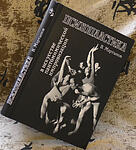

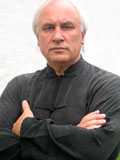 Коан – вопрос к членам Федерации Юн Чун Цюань от президента В.В. Мартынова: «Что Вы сделали для Федерации из того, что не мог бы сделать любой другой за деньги?»
Коан – вопрос к членам Федерации Юн Чун Цюань от президента В.В. Мартынова: «Что Вы сделали для Федерации из того, что не мог бы сделать любой другой за деньги?»
